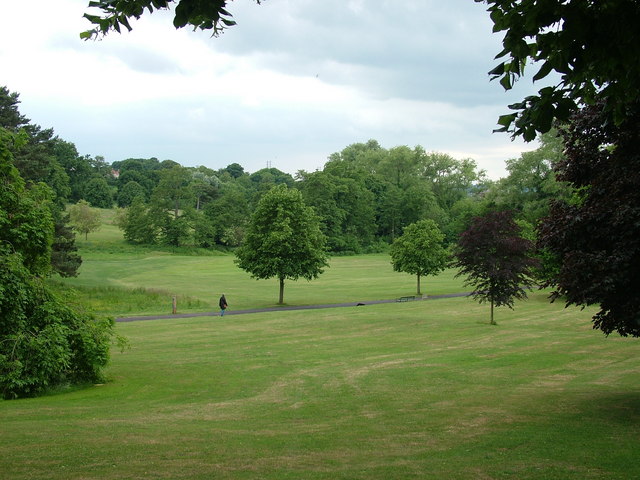|
Holywells Park, Ipswich
Holywells Park is a public park in Ipswich, England situated between Nacton Road and Cliff Lane, near to the Ipswich Waterfront. History Tools from the stone age have been found on the site, as well as bronze age axes and Roman coins. In the 13th century Holywells was part of the Manor at Bishops Wyke which was held by the Bishops of Norwich. During the reign of Henry VIII. the Manor was returned to the crown and then granted to Sir John Jermy. The land was bought by John Cobbold in 1812 who brought his wife Elizabeth Cobbold and their large family here to live in 1814. Cobbold later began using the areas natural springs to produce beer. In 1814 Holywells House was completed on the site of an old farmhouse (this building was demolished in 1962 due to wood rot and only the stable block remains). In 1935 the land at Holywells was presented to the people of Ipswich by Lord Woodbridge and then opened to the public in 1936. Holywells park is now a designated a Conservation Ar ... [...More Info...] [...Related Items...] OR: [Wikipedia] [Google] [Baidu] |
Margaret Catchpole Public House
The Margaret Catchpole is a pub in Cliff Lane, Ipswich, named after Margaret Catchpole, a servant of Elizabeth and John Cobbold of the Tolly Cobbold brewery. Built in 1936 by the local architect Harold Ridley Hooper for the Cobbold brewery, it is a Grade II* listed building. Most of its interior features have remained unaltered since the 1930s, making it one of the finest examples of this period in England. Since 2003 it has been part of the Holywells Park Conservation Area. Margaret Catchpole The building was named after Margaret Catchpole, previously a servant of the writer Elizabeth Cobbold. After providing good service to the Cobbold's, she left their employ. However, in 1797 she stole a horse from them to ride to London to find her lover. She was arrested and after being found guilty in a trial she was sentenced to death, subsequently commuted to transportation to Australia. Her story was subsequently turned into a novel by Elizabeth's son, Richard Cobbold Richard Cobbo ... [...More Info...] [...Related Items...] OR: [Wikipedia] [Google] [Baidu] |
Walking The Dog, Holywells Park - Geograph
Walking (also known as ambulation) is one of the main gaits of terrestrial locomotion among legged animals. Walking is typically slower than running and other gaits. Walking is defined by an 'inverted pendulum' gait in which the body vaults over the stiff limb or limbs with each step. This applies regardless of the usable number of limbs—even arthropods, with six, eight, or more limbs, walk. Difference from running The word ''walk'' is descended from the Old English ''wealcan'' "to roll". In humans and other bipeds, walking is generally distinguished from running in that only one foot at a time leaves contact with the ground and there is a period of double-support. In contrast, running begins when both feet are off the ground with each step. This distinction has the status of a formal requirement in competitive walking events. For quadrupedal species, there are numerous gaits which may be termed walking or running, and distinctions based upon the presence or absence of ... [...More Info...] [...Related Items...] OR: [Wikipedia] [Google] [Baidu] |


